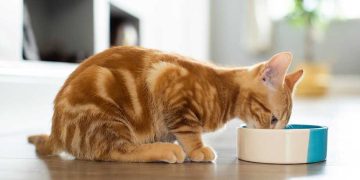Introduction
Scottish Fold cats are one of the most charming and distinctive cat breeds, known for their endearing folded ears and calm, affectionate demeanor. However, with their unique looks come specific grooming requirements. While many cat owners enjoy the companionship of their Scottish Fold without thinking much about grooming, it’s an essential aspect of their overall care that shouldn’t be overlooked.
In this comprehensive guide, we’ll explore all aspects of grooming for Scottish Folds—whether they have short or long coats—and give you expert advice on maintaining their health, comfort, and appearance. From brushing their coats to caring for their ears and claws, we’ll cover it all. Grooming isn’t just about appearance; it’s about keeping your Scottish Fold in good health, happy, and comfortable in their environment.
1. Understanding the Coat Type of Scottish Fold Cats
Before diving into the specifics of grooming, it’s important to understand the unique coat types of Scottish Folds, as grooming needs can differ depending on whether your cat has a short or long coat.
1.1 Short-Haired Scottish Folds
Short-haired Scottish Folds are known for their plush, soft fur. Despite their shorter length, these cats can still benefit from regular grooming. Short-haired Folds tend to shed moderately throughout the year, with seasonal shedding peaks during the spring and fall.
1.2 Long-Haired Scottish Folds
Long-haired Scottish Folds have an even more luxurious coat, requiring more frequent attention. Their coats are longer and denser, which can easily become matted and tangled without regular brushing. Long-haired Folds often need daily grooming to prevent tangles and mats, especially around the neck and chest areas, which are more prone to clumping.
2. The Importance of Regular Grooming
Grooming is more than just keeping your Scottish Fold looking beautiful; it plays a key role in maintaining their overall health and well-being. Regular grooming helps:
- Prevent Mats and Tangling: Both short-haired and long-haired Scottish Folds are prone to tangling and mats, which can lead to discomfort or skin issues.
- Control Shedding: Regular brushing helps control shedding, reducing the amount of fur that ends up on your furniture and clothing.
- Check for Skin Problems: Grooming gives you the opportunity to inspect your cat’s skin for signs of allergies, infections, or parasites, such as fleas.
- Maintain Overall Hygiene: Grooming helps keep your cat clean, minimizing the risk of infection in their ears, eyes, and paws.
3. Essential Tools for Grooming a Scottish Fold
Before you start grooming, you’ll need the right tools. Here’s a list of grooming essentials for your Scottish Fold cat:
3.1 Brushes and Combs
The type of brush you use depends on your Scottish Fold’s coat type:
- Slicker Brush: A slicker brush is ideal for long-haired Scottish Folds and works great for detangling mats and preventing clumping.
- Pin Brush: A pin brush is gentle and effective for untangling and smoothing out your cat’s fur.
- Bristle Brush: For short-haired Scottish Folds, a bristle brush is great for removing loose fur and keeping the coat smooth.
- Comb: A wide-toothed comb helps untangle any minor knots, while a fine-toothed comb can help with detail work around the ears and face.
3.2 Nail Clippers
A good pair of cat nail clippers is essential for trimming your Scottish Fold’s claws. Regular nail trimming is important to prevent overgrowth and discomfort.
3.3 Ear Cleaning Tools
Since Scottish Folds have their distinctive folded ears, proper ear care is a key part of grooming. A gentle ear cleaner and cotton pads or balls are useful for removing excess wax and dirt from their ears.
3.4 Eye Wipes
Scottish Folds are occasionally prone to eye discharge, especially as they age. Using cat-safe eye wipes helps keep the area around their eyes clean and clear of any build-up.
3.5 Toothbrush and Cat Toothpaste
Dental care is another important part of grooming. Using a cat-specific toothbrush and toothpaste helps keep your Scottish Fold’s teeth clean, preventing dental diseases like gingivitis and plaque buildup.
4. Brushing and Combing Your Scottish Fold
Now that you’ve gathered your tools, it’s time to discuss the process of brushing and combing your Scottish Fold’s coat. Whether they have short or long fur, regular brushing is key.
4.1 Short-Haired Scottish Folds
Short-haired Scottish Folds require less frequent brushing than their long-haired counterparts, but they still benefit from regular maintenance.
- Frequency: Brush your short-haired Scottish Fold at least once a week to remove loose hairs and minimize shedding.
- Technique: Use a bristle brush or a soft pin brush, starting at the head and working your way down to the tail. Be sure to brush in the direction of hair growth, paying special attention to areas where hair may naturally tangle, such as the chest and the area around the collar.
- Focus on Problem Areas: Even short-haired cats can develop mats behind the ears or under the legs, so pay extra attention to these areas.
4.2 Long-Haired Scottish Folds
Long-haired Scottish Folds require more attention, and daily brushing is recommended to prevent tangles and mats.
- Frequency: Ideally, you should brush a long-haired Scottish Fold every day to prevent tangles and mats. If daily grooming isn’t possible, at least aim for 3-4 times a week.
- Technique: Use a slicker brush to remove any tangles, followed by a pin brush to smooth out the coat. Be gentle, especially if you encounter any mats, as pulling on mats can cause pain. Work through any knots slowly and gently, and if needed, use a detangling spray specifically designed for cats.
- Matted Fur: If you encounter a particularly stubborn mat, you may need to use a comb to gently work through it or, in extreme cases, trim the mat carefully with grooming scissors.

5. Caring for the Ears of a Scottish Fold
The folded ears of Scottish Fold cats require special attention. Because their ears are folded inwards, it’s easier for dirt, wax, and moisture to accumulate, increasing the risk of infections.
5.1 Cleaning Your Scottish Fold’s Ears
- Frequency: Clean your cat’s ears once a week or as needed, depending on the buildup of wax and debris.
- Technique: Use a cat-safe ear cleaning solution and a cotton pad or ball. Gently wipe the inside of the ear, avoiding deep insertion into the ear canal. If there’s noticeable dirt or wax, gently wipe it away, but never use cotton swabs, as they can push debris deeper into the ear.
- Signs of Infection: If you notice a foul odor, excessive scratching, or redness inside the ear, it could indicate an ear infection. In such cases, take your cat to the vet for treatment.
6. Claw Trimming for Scottish Folds
Like all cats, Scottish Folds need their claws trimmed regularly to prevent overgrowth and discomfort.
6.1 How to Trim Your Cat’s Claws
- Frequency: Trim your Scottish Fold’s claws every 2-4 weeks, depending on how quickly they grow.
- Technique: Use a pair of cat-specific nail clippers and trim just the sharp tip of the claw. Be careful not to cut too close to the pinkish area (the quick), as this can cause bleeding. If you’re unsure, it’s better to trim a little at a time.
- Desensitizing: If your cat isn’t used to having their claws trimmed, gently desensitize their paws by massaging them regularly. Start slowly and reward your cat with treats after each successful session.
7. Dental Care for Scottish Fold Cats
Dental health is a vital aspect of grooming, and like all cats, Scottish Folds are prone to dental issues such as plaque buildup, gingivitis, and periodontal disease.
7.1 Brushing Your Cat’s Teeth
- Frequency: Aim to brush your Scottish Fold’s teeth at least 2-3 times a week, although daily brushing is ideal.
- Technique: Use a soft-bristled cat toothbrush and cat-safe toothpaste (never use human toothpaste). Start by brushing the outside of their teeth, moving in small circular motions. Gradually introduce this process to your cat, starting with short sessions and rewarding them afterward.
- Dental Treats: In addition to regular brushing, you can offer dental treats or dental toys designed to reduce plaque buildup.
8. Bathing Your Scottish Fold
Scottish Folds don’t need frequent baths, but they may occasionally require one if they get into something sticky or smelly.
8.1 When to Bathe Your Scottish Fold
- Occasional Baths: Bathing should be done sparingly. Only bathe your Scottish Fold when necessary, such as after they’ve rolled in dirt, or if they have an odor that can’t be resolved with regular grooming.
- Bathing Technique: Use a cat-friendly shampoo and lukewarm water. Wet your cat slowly, starting from the neck and moving down. Be sure to rinse thoroughly to avoid leaving shampoo residue. Dry your cat gently with a towel, and use a hairdryer on a low, cool setting to finish drying.
9. Health Considerations During Grooming
While grooming, keep an eye out for any health issues that might need attention:
- Skin Problems: Dry skin, rashes, or lesions may indicate allergies or other underlying health conditions.
- Fleas and Ticks: Regular grooming is a great time to check for fleas, ticks, or other parasites.
- Changes in Behavior: If your Scottish Fold seems uncomfortable or resistant during grooming, it could be a sign of pain or discomfort, and you should consult your vet.
10. Conclusion
Grooming your Scottish Fold is an essential part of their care routine, not only for maintaining their appearance but also for ensuring their health and comfort. With the right tools, techniques, and frequency, you can help your Scottish Fold stay clean, happy, and healthy. By paying attention to their ears, claws, teeth, and coat, you’re ensuring that your feline companion enjoys a long and comfortable life.























































